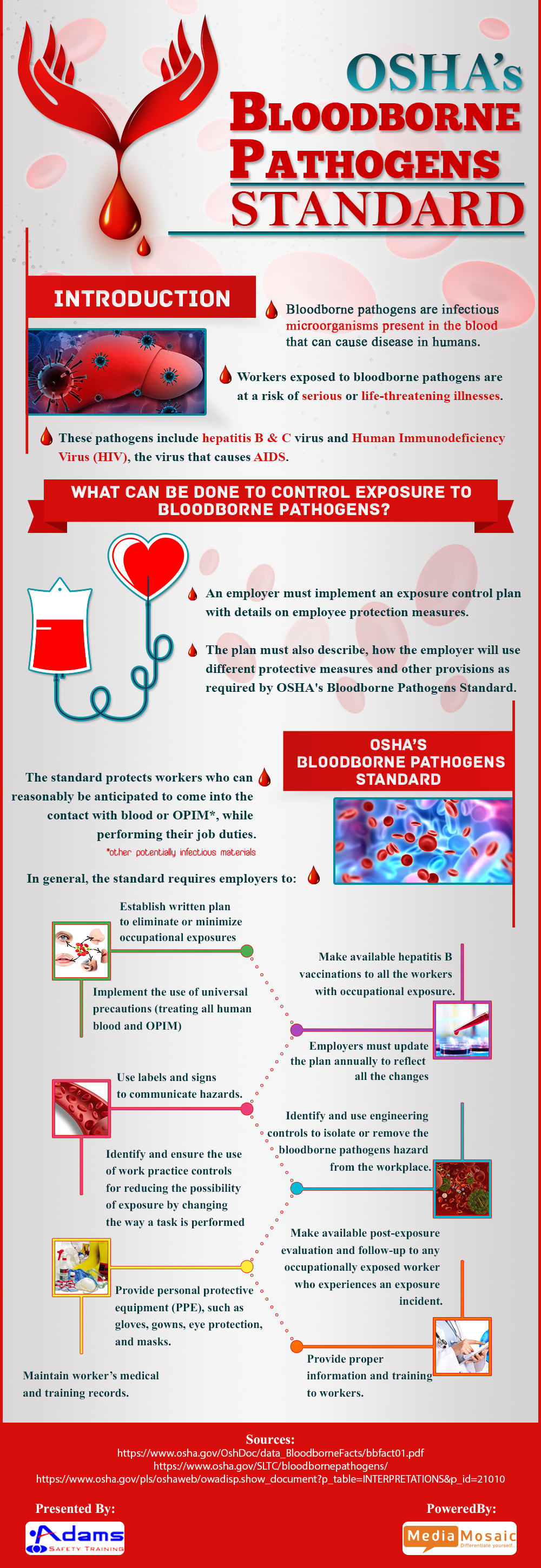Bloodborne pathogens are infectious microorganism present in the human blood that can cause diseases in humans. The given Infographic will help to bring some facts about these pathogens into the light. Workers in many departments such as nurses, responders and health care providers are explicitly exposed to these pathogens that accentuate hepatitis B (HBV), hepatitis C (HCV) and human immunodeficiency virus (HIV) and many more disease-causing viruses. Workers need an exhaustive plan to protect themselves against such grotesque diseases.
OSHA’s bloodborne pathogen standards lay down the guidelines for employers to protect their workers from these ‘life-threatening’ pathogens.
Employers need to establish an exposure control plan. This plan will include the list of job classification which can result in occupational exposures. This list should also contain the activities and tasks that will lead to exposure for these workers. This plan needs to be updated annually and any changes in the technical facilities that will eliminate and curtail down the risk of the exposure should be reflected in the updated plan.
Warnings and signs can be effectively used for labeling the hazardous reusable sharps and containers that carry a great danger of causing infections. For the containers carrying and storing blood, contaminated equipment or HIV and HBV research facilities, during the presence of infected animals around the working area, the use of signs is incumbent for the employers to comply with the pathogen standards.
The given Infographic will delineate the standards for employers to reduce the risks involved with pathogens.


